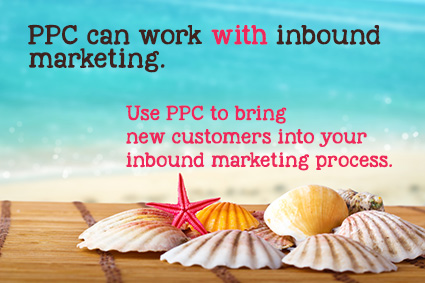We used to recommend PPC (CPC, paid search, Adwords — call it what you will) only to certain clients: companies with a fairly high-priced product or service, a fairly large budget, and the resources to create special landing pages for each product or service they wanted to sell.
Without those characteristics, we found, the cost of paid search wasn’t really worth it for most clients.
Times have changed.
For one thing, there’s a lot more competition online. We used to have clients who were in competition with just two or three websites, often only local businesses, and often the competitors’ websites were so poor that making a good website was all it took to bring our clients to the top of the search engines.
Another thing that has changed is the whole concept of being #1 (or #2, or #874) on Google. Nowadays, different people see different things. Google still ranks websites and the criteria aren’t much different from what they were in the past — quality, relevance, authority, usability — but now the results are personalized. What you see depends on where you are, what your friends like, what other websites you’ve visited, the searches you’ve made… lots of factors. We no longer have the kind of control over what people see in organic search that we used to. This makes the chance PPC ads give of being at the top of the search results much more valuable.
What’s more, the prices of PPC ads have gone down. There are more options, including display ads showing products. Targeting is very sophisticated, so you can serve ads only to the most likely consumers. Adwords offers a level of control that legacy marketing vehicles like TV and newspapers can only dream of.
PPC is a practical option now for most businesses.
How can you make it work with your SEO and inbound marketing efforts?
- Develop an overall strategy with clear goals. Knowing what you want to to sell, to whom, and how you want to meet your customers on their path to purchase will make all your efforts more effective.
- Identify the things you can do with SEO. If you have great organic results for “healthy snacks” or “Lasik surgery,” you can show up in the ads near your organic results, or you can choose to use Adwords for goods and services that are harder for you to rank for organically. Ads don’t affect your organic rankings at all, but you can test duplicating efforts and using PPC campaigns for the things you don’t have sewn up yet and see which works better for you.
- Bring your ad visitors into your inbound marketing process. Capture their contact information so you can reach them with your email marketing, invite them to subscribe to your blog, or use remarketing to offer them something smaller if they don’t bite when they click through your ad.
All the digital marketing channels — organic search, social media, email, content marketing, paid search — can work together to make a whole that is greater than the sum of its parts.


Leave a Reply